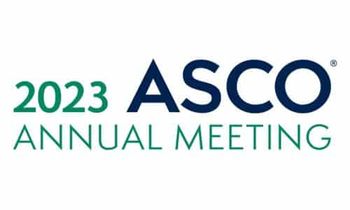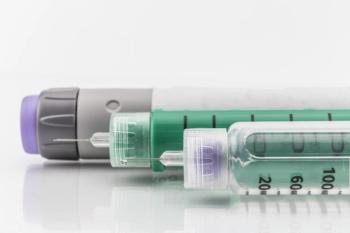
Adults younger than 50 years with colorectal cancer (CRC) who experience postpresentation delays in treatment did not appear to have worse outcomes, according to a study in Ontario, Canada.

Laura is the vice president of content for The American Journal of Managed Care® (AJMC®) and all its brands, including Population Health, Equity & Outcomes; Evidence-Based Oncology™; and The Center for Biosimilars®. She has been working on AJMC since 2014 and has been with AJMC’s parent company, MJH Life Sciences®, since 2011.
She has an MA in business and economic reporting from New York University. You can connect with Laura on LinkedIn or Twitter.

Adults younger than 50 years with colorectal cancer (CRC) who experience postpresentation delays in treatment did not appear to have worse outcomes, according to a study in Ontario, Canada.

There is a right way and a wrong way to inform a patient about a switch from the reference product to a biosimilar, explained Laura Wingate, executive vice president, Education, Support, & Advocacy, Crohn's & Colitis Foundation.

Coverage of ASCO sessions and posters that addressed lessons from the Oncology Care Model and concerns about the Enhancing Oncology Model, which launched shortly after the annual meeting ended.

Some populations face longer diagnostic delays for hidradenitis suppurativa (HS), but medical education can help improve knowledge of common dermatologic diseases and reduce delays in diagnosis, said Haley Naik, MD, FAAD, associate professor of dermatology, University of California, San Francisco, School of Medicine.

The playbook from the 3 organizations highlights 5 best practices for data sharing from organizations with real-world experience in value-based care arrangements.

Despite having 8 adalimumab biosimilars on the market now, patients may only see 1 or 2 available through their insurance, explained Laura Wingate, executive vice president, Education, Support, & Advocacy, Crohn's & Colitis Foundation.

Some of the many barriers patients with hidradenitis suppurativa (HS) face include accessing knowledgeable providers, insurance coverage of treatment, and the way the health care system is set up, said Haley Naik, MD, FAAD, associate professor of dermatology, University of California, San Francisco, School of Medicine.

A new analysis finds branded insulin glargine (Lantus) still has a majority of total market volume and new drug starts despite competition from Semglee, an interchangeable biosimilar.

Bispecific antibodies or chimeric antigen receptor (CAR) T-cell therapies are both associated with an increased risk of infection for patients with multiple myeloma (MM), explained Hans Lee, MD, of The University of Texas MD Anderson Cancer Center.

Some of the results with biologics and Janus kinase (JAK) inhibitors for atopic dermatitis have been better in practice compared with clinical trials, said Emma Guttman-Yassky, MD, PhD, FAAD, of the Icahn School of Medicine at Mount Sinai.

As Humira biosimilars enter the market, patient education about biosimilars is crucial to prevent the nocebo effect when patients switch from the reference product, explained Laura Wingate, executive vice president, Education, Support, & Advocacy, Crohn's & Colitis Foundation.

A report from Samsung Bioepis highlighted the positive correlation between biosimilar usage and average sales price discounts, with the oncology space being more price sensitive than other areas.

After the Supreme Court ruled reimbursement cuts to 340B hospitals were done unlawfully, CMS is proposing to repay hospitals and providers in the program with a lump sum that has repercussions for other hospitals because of the agency’s need to be budget neutral.

The full approval follows an accelerated approval from January 2023 and was based on a confirmatory trial, which found lecanemab slowed disease progression compared with placebo.

Two abstracts presented at the 2023 American Society of Clinical Oncology annual meeting evaluated biosimilar adoption across oncology practices and highlighted the role payers play in preventing or promoting adoption.

Unless all populations are represented adequately in trials, it will be hard to know if a drug works the same in all populations as it does in one specific one, explained Robert Dellavalle, MD, PhD, MSPH, of University of Colorado School of Medicine and Rocky Mountain Regional VA Medical Center.

After 7 years, competition for Humira is here. The first adalimumab biosimilar launched in January, but an additional 8, including an interchangeable product, will hit the US market in July.

The treatment is the first approved by the FDA to treat the 2 most common subtypes of generalized myasthenia gravis.

Gene therapy is only one exciting area of treatments in the pipeline to potentially treat inherited retinal disease, said Byron L. Lam, MD, professor of ophthalmology, University of Miami Miller School of Medicine's Bascom Palmer Eye Institute.

The Act4Biosimilars Action Plan seeks to increase biosimilar adoption by at least 30 percentage points in 30-plus countries by 2030.

Glofitamab is the first bispecific antibody with a fixed-duration treatment for adults with relapsed or refractory diffuse large B-cell lymphoma (DLBCL).

The pharmacy benefit manager SmithRx has announced that through a partnership with the Mark Cuban Cost Plus Drug Company, it will offer Yusimry, an adalimumab biosimilar, for less than 90% of the cost of the reference product, Humira.

The most exciting treatment for inherited retinal disease was approved in 2017, but there are many novel treatments in phase 2 or phase 3 trials at this point, said Byron L. Lam, MD, professor of ophthalmology, University of Miami Miller School of Medicine's Bascom Palmer Eye Institute.

The findings provide further support of recommendations in the clinical guidelines to favor one therapy over the other.

Patients with depression, anxiety, or both at the time of diagnosis of diffuse large B-cell lymphoma (DLBCL) have worse overall survival and lymphoma-specific survival.

When multiple trastuzumab biosimilars entered the US market in quick succession, they were able to do something other biosimilars have not in the United States: drive down the cost of the originator biologic.

Abstracts presented at EULAR 2023 highlighted the impact that a mandatory switching policy had on biosimilar uptake in British Columbia, Canada, and the lack of uptake when no such policy was in place in the United States.

New research has found the 340B program is slowing uptake of biosimilars by incentivizing use of more expensive biologics.

Insurance is by far the most important factor of whether patients followed up with treatment after getting screened for glaucoma, said Byron L. Lam, MD, professor of ophthalmology, University of Miami Miller School of Medicine's Bascom Palmer Eye Institute.

The FDA approved Celltrion Healthcare’s Yuflyma (adalimumab-aaty), which is a high-concentration, citrate-free formulation.

259 Prospect Plains Rd, Bldg H
Cranbury, NJ 08512
© 2025 MJH Life Sciences®
All rights reserved.
